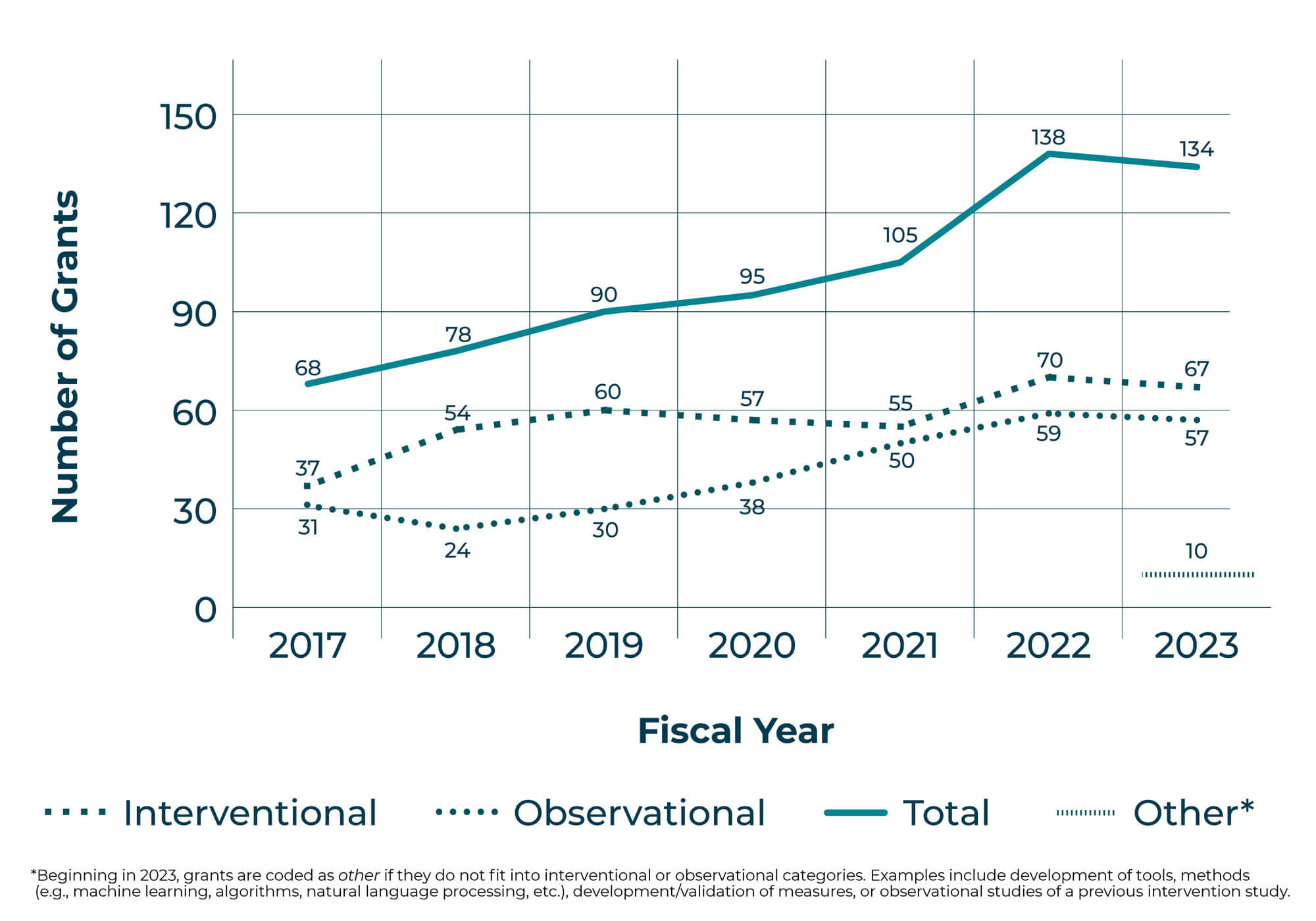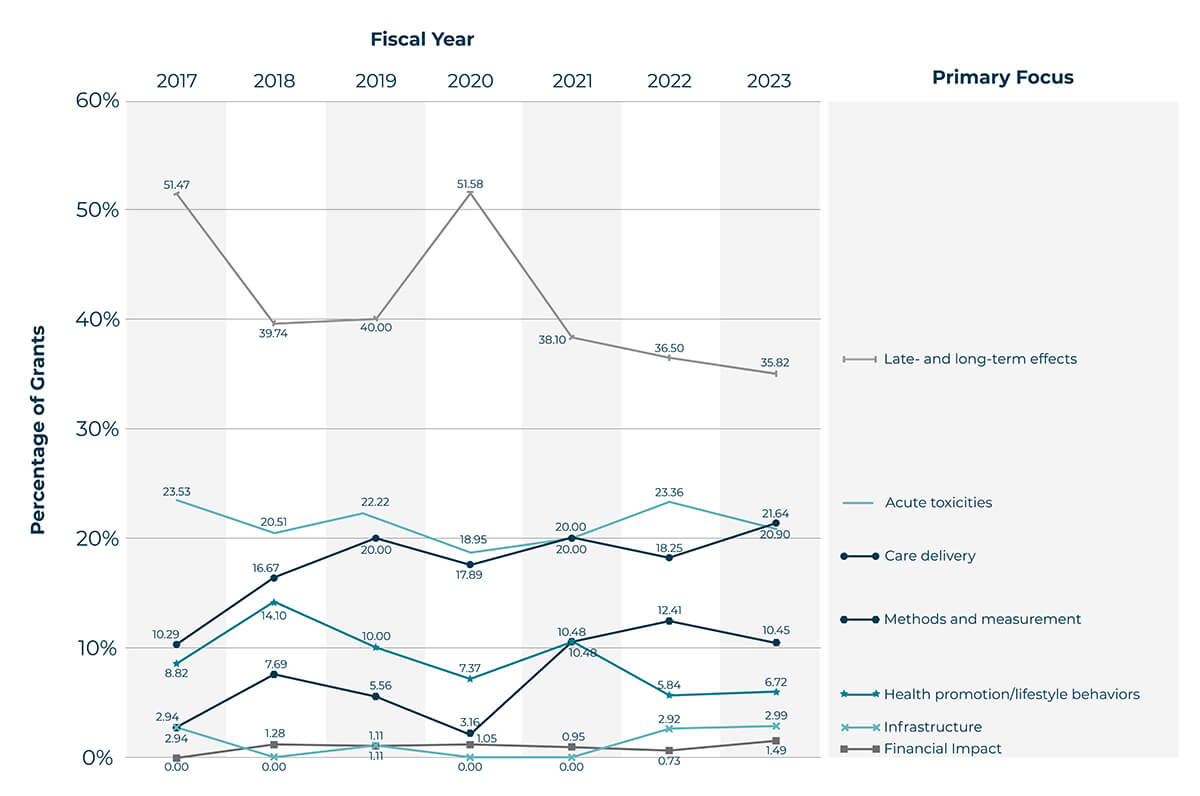Survivorship research includes efforts to understand, prevent, and mitigate acute, long-term, and late-occurring physical, psychological, social, and economic effects of cancer and its treatment, improve care delivery, promote healthy behaviors, develop and sustain research infrastructure, and improve research methodologies for those impacted by cancer. This section provides information and characteristics of NIH survivorship grants funded over the past several years.
Number of Cancer Survivorship Grants
The graph below shows the number of interventional and observational grants, as well as total grants funded from FY 2017 through FY 2023.

Percentage of Cancer Survivorship Grants by Primary Focus Area
This graph shows the percentage of grants awarded from FY 2017 to FY 2023 within each primary focus area.

Adapted from Mollica MA, Tesauro G, Gallicchio L, Guida J, Maher ME, Tonorezos E. Survivorship science at the National Institutes of Health 2017-2021. J Cancer Surviv (2023). https://doi.org/10.1007/s11764-023-01414-0

